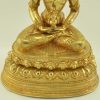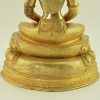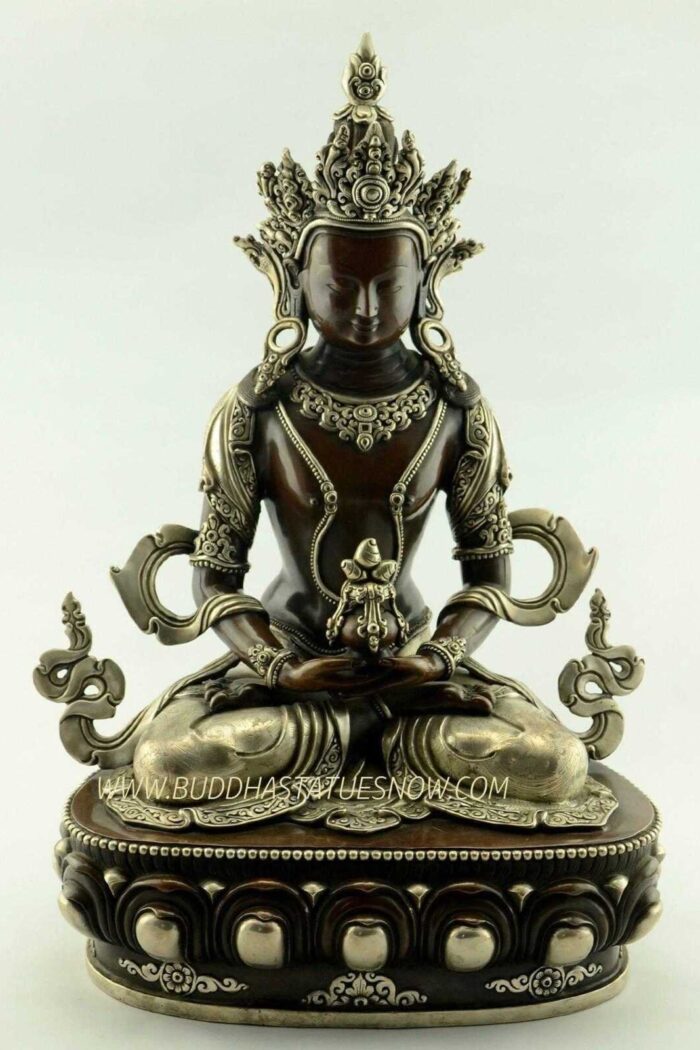This beautiful Aparmita sculpture was hand crafted using the traditional lost wax sculpting method. The fine details on the double lotus pedestal, robe, crown and jewels is the result of using this time tested method. Indeed, the artisans of Nepal have long been the preferred source of the Tibetan monasteries for handmade sculpture and ritual items. As a result, the buyer can rest assured that they have procured a monastic quality Aparmita sculpture.
At the request of the buyer, we will embed the crown and jewels of the statue with turquoise or red coral stones. The statue will wear the colorful adornments very well and inspire all who see the statue. Additionally, the sculptor used the traditional fire gilding method to apply the residual 24K gold finish. As a result, the statue is imbued with life like expression.
Handmade Aparmita Sculpture Features
This handmade Aparmita sculpture holds the immortality vessel in his lap filled with amrita – longevity nectar. Additionally, Aparmita wears the ushnisha top knot that is associated with royalty in ancient India. Also, the third eye between the brows indicates that Aparmita has achieved the state of perfected wisdom and he has the ability to see into a divine world.
Aparmita sits in full lotus pose, also known as the “Vajra” pose. Vajra is a Sanskrit word that translates as diamond or lightening bolt in English. It is a symbol of indestructible virtue. Indeed, this sculpture would make an inspirational addition to your home or meditation center.
Furthermore, Aparmita sculptures are used as the center point of Tibetan longevity rituals. This is because Aparmita is an embodiment of the longevity attribute of Amitabha Buddha. Buddhas and high level bodhisattvas have the ability to take any form necessary in order to ease the suffering of sentient life. As a result, Amitabha appears as Aparmita and grants long life to devotees. Click here to learn more Amitabha’s longevity attribute.













